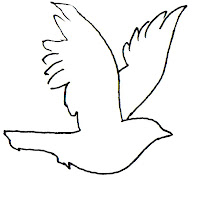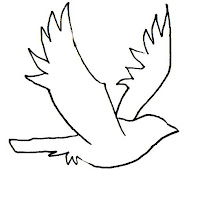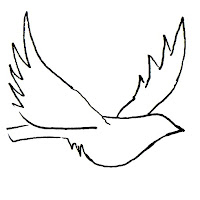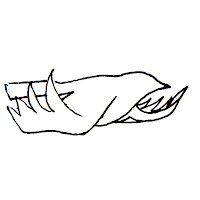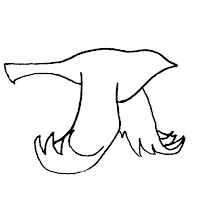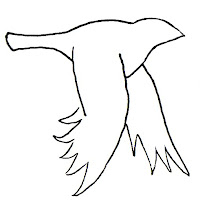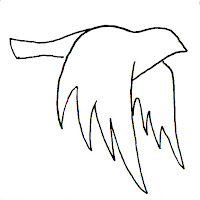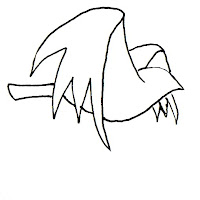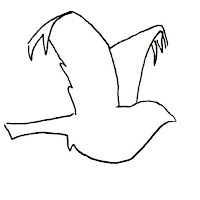Communication Technology 2 Evaluation
My main aim for Communication Technology 2 (Comm. Tech 2) was to become more confident in using the recourses available in college and Adobe Photoshop/ Illustrator whilst expanding my illustration skills in the process. I initially wanted to portray this through animation as I find it really interesting but have only touched upon it in the past. However, the college ordered new animation software and it did not come in time and I was told that there was no point in showing me the old software when it is already outdated. I was devastated, but decided to try out loads of new skills instead of focusing on just one.
Looking back, I realise it took me a while to get started on this brief. I think this was because I could not pursue animation so therefore I did not know what to do, other than draw. This was just about acceptable because one of my aims was to draw more, but I knew I had to (and wanted to) expand further. Nevertheless, as a result of this I am drawing more everyday: if I am watching television or a film it does not feel right if I am not drawing at the same time. I have learnt that these short moments in a day soon fill up a sketchbook and I feel my drawing skills have developed because of this. Now my next aim is to draw more without reference. Also I have learnt that when I get briefs in the future, I just need to get started. I spend too much time worrying about what I am going to do when I need to just get on and do it.
Furthermore, I have become more confident about my work and seem to be developing a style. I was very self- conscious about my drawings and felt my sketchbook too private to show. I think this is because I was too precious about my drawings. I soon realised I am a perfectionist: one tiny A5 illustration can take me a long time to finish. I now experiment more, and not as afraid to make mistakes and try out new techniques- this is the best way to learn, to discover something new. I have become aware that paying attention to detail and spending time tweaking the image is what I enjoy doing, and that it has become a part of my style. Learning how to use the laser cutter and finding out how to “live trace” an image really suited my silhouette illustrations, making them look sharper and generally more professional. I think this was the turning point to my own opinion of my work. I want to keep up the drawing, carry on exploring and see if I can make my style more distinctive.
Screen-printing was another learning curve. It was something I did not know much about so I decided to give it a try. At first the lengthy screen preparation process put me off, it was very tedious waiting for it to dry. This was where time management came in- I found I could go and prepare the image for exposure or get on with something else all together. I learnt that making the most of these small time slots in your day add up very quickly. When I started printing however, it surprised me how quick it was. It made me nervous though because one stupid mistake, such as forgetting to put the weights on, and the entire print is ruined (as I found out the hard way). It has taught me to be patient and thorough; rushing into things is how you make mistakes.
In addition, through screen- printing, I experimented with the size and the position of my images. The prints on the pillowcases were the original size of the hand drawn illustration, but when I printed onto the jumpers I enlarged the image in Adobe Photoshop and positioned it so the tree looked like it was growing onto the jumper from the side. I normally work really small but enjoyed exploring this aspect and would have liked to try more, but that meant stripping new screens, which would have been both time consuming and expensive. I am defiantly going to experiment with this in more detail in the future. From a tiny drawing in my sketchbook to a huge adaptation on a jumper, screen- printing really made me realise what is available in college and allowed me to expand my illustration skills. I was proud of the finished product as after 5 solid days in the print room, I felt I had worked hard to get there.
Determined not to abandon animation completely, via a group critique with Christian and Matt, I found out that you could create an animated gif on Adobe Photoshop, so gave it a try. Much to my surprise, I found the whole process really straightforward- if I had known this I defiantly would have used it more in the past. I taught myself the process by borrowing books from the library and watching tutorials online, discovering that this is my strongest way of learning. I am an independent learner. Other people distract me easily; so strangely, sitting on my own in my room means I work better than working in the actual Visual Communication studio. It also meant I could work at my own pace, go back and re- read something if I did not understand it and taking notes as I go along. I am self-disciplined so I know I will get on with my work (I begin to feel guilty). I should defiantly work like this more often in the future. A downside is that if I do get stuck I will have to go into college to ask for help. From Comm. Tech 2 however, I have become more confident in doing this (a confidence which has grown from using the laser cutter as I had to keep asking for new materials etc).
Incidentally, this brief has aided my confidence in using a blog and computers in general. Last year I really struggled with blogging as I had never used one before and did not really use a computer for my work. Small things, like uploading and aligning pictures with text, used to seem really tricky and I would become frustrated. Now I can achieve this successfully and find myself blogging everyday and will carry on with it in the future. This shows that the best way to become better at something is to practice, and keep practicing until you are satisfied. Also, I find that after I have completed an illustration on paper, I am scanning it in experimenting with it further in Photoshop and Illustrator. The best thing about this is that I can do whatever I want and the actual picture itself will not be harmed. This has also helped me to be less precious with my drawings as well as become more familiar with the Adobe software.
Now I feel more confident using computers, blogging and my work in general, I would now like to try and design my own web page. Although I have only tried web design one, and found it really difficult, I believe it would be a professional way to present my work. Due to Comm. Tech 2 I have learnt where to ask for help when I need it, and I actually feel I have gained the confidence to do this. Subsequently, I want to start undertaking live briefs and competitions. This will allow me apply the skills I have learnt and continue to build in confidence. I do not necessarily have to event submit the work once it is finished, but at least it would be something to pop into a portfolio.
Overall, Communication Technology 2 has proved to be a useful brief. While at times it could be time consuming and tedious to the point where I almost give up, I have learnt a lot about myself: from the way I work, to my style of illustration. I also now know where I need to improve my skills and build more confidence (although this has grown hugely and, I feel, made my work stronger). Comm. Tech 2 has helped me to develop a strong base and starting point to allow me to do this. I have learnt that, strange as it may sound, I like working hard. I produce better work when I have loads to get on with and it is more rewarding when all the work is finished.

































